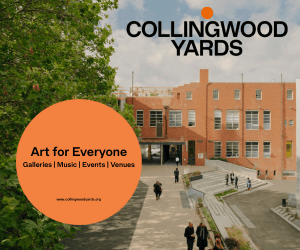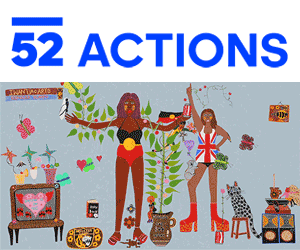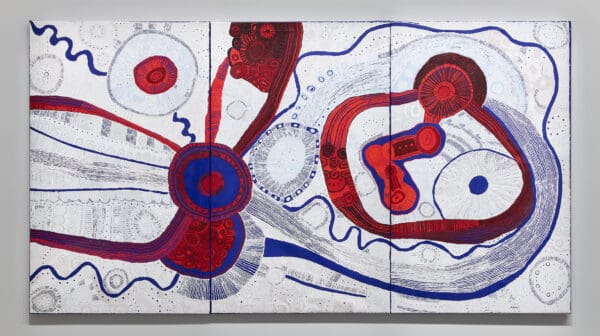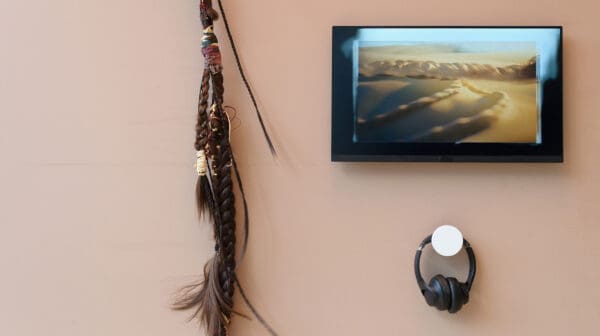Writing about the act of writing – or more specifically, to write about the field of what we commonly call ‘arts writing’ and to ponder what this might mean – is perhaps setting a thorny task for myself here.
Is arts writing simply any text that speaks to or is about art? Is it writing that is created for an arts audience? Or is it writing that is art? Is it a topic, a theme or a style?
My immediate thought to this cascade of questions is that arts writing embraces all of these things, and more. Just as art is not and cannot be defined by its intention, form or audience, arts writing similarly slips between these delineations. Arts writing can wear a number of hats: it can explain and support, it can describe and inform, it can sell and market, historicise and canonise, critique and challenge, and it can also exist as its own art form in its own right. But therein also lies the danger – with such a broad range of possibilities contained within the ideology of arts writing, it can too easily conflate or minimise the different goals that this field purports to achieve.
Perhaps we are in a new arts writing domain where, with the proliferation of social media and digital publication tools, we are at a risk of having too much information within our reach? Critics and academics have been a constant, but the means of distributing writing has changed, and with that the range of voices who are speaking has also changed. I wonder whether our generation’s John Berger or Robert Hughes (we desperately need more critics from diverse backgrounds) will be memorialised in 2065 with a collection of writing that includes memes and tweets? The recent work of the White Pube, created by self-described ‘art critic baby gods’ Gabrielle de la Puente and Zarina Muhammad, as well as TabloidArtHistory, which combines art criticism with contemporary pop culture, gives me hope in this.
Perhaps arts writing is not something that can be defined, but only something that can be recognised, and this will mean different things to different readers.
The arts writing that excites me the most is the work that sits somewhere between personal examination and art critique. An approach to writing that examines not only art, but the modes of production, distribution and community that is built around art and its reception. We are often told that art criticism is dead, or that no one wants to read it, so perhaps I am setting myself up here for a major disappointment. Arts publications in Australia risk either being too generalised (lacking critique) or too esoteric (lacking audiences).
An added complication, as it is in most things, is money. Arts writing is often a transaction, and when a gallery, artist or publication is paying your invoice, how much can you speak outside of these structures? I wonder whether the transactional nature of arts writing limits its capacitiy to be truly independent and critical, and that is before you add in considerations like print deadlines, style guides, and word counts (I have 350 words remaining at this point).
In a profession where interpersonal relationships and community building are essential, where the lines between professional and personal networks are blurred, where a lot of art writers are also artists, curators or arts managers, this further complicates the space for arts writing. You can most likely not support yourself doing only one of the above, so the inevitable ‘slashie’ career emerges. The odds are stacked so that the more you gain experience (or become professionalised) in the art world, the less you are perhaps able to speak out of turn lest it mire your future professional opportunities.
This brings me to the crux of the matter, which is ‘what motivates someone to become an arts writer?,’ and what holding space in this domain might look like. Writing, like other creative practices, stems from a desire to convey one’s point of view or experience, and as such it is an incredibly privileged and selfish pursuit. The very best critique serves the purpose of not only challenging existing material or bringing forth different perspectives; it also serves as a means of self-propaganda in putting your lived experience into the world.
Let me be clear about what I mean here. Arts writing is a form of cultural gatekeeping, and like other forms of gatekeeping, those who hold power – in this case, art editors, writers and publishers – also control the narratives about what is written about and why. This inevitably raises bigger questions about authorship, responsibility and representation. The change in distribution through social media and digital channels does certainly contribute to a change in this agenda by giving a wider platform for commentary from more voices, but this is not the same as ensuring that all voices are regarded with the same weight or power. The question still remains: Whose voices are we listening to, or elevating?
To write about art is to form a narrative around art and artists, a narrative that has the potential to continue beyond the physical and temporal limits of an exhibition or an artist’s lifetime. In this way, arts writing exists both alongside and independently from art, and its distribution as text gives our words a certain significance beyond a simply symbiotic relationship. This is both the burden, and the privilege, of being an arts writer.
This article was originally published in the July/August 2019 print edition of Art Guide Australia.











